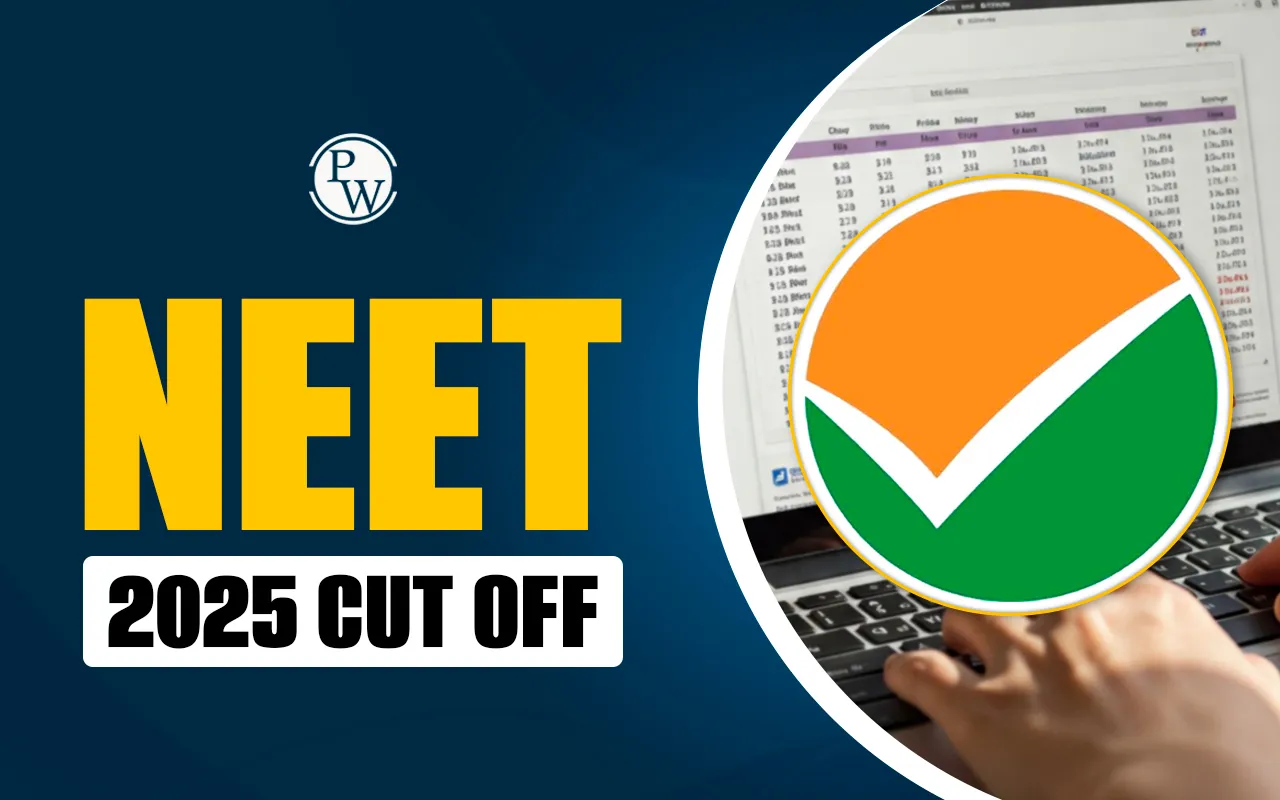
Evolution MCQs: Evolution is an important and high-scoring chapter in the NEET Biology syllabus. It explains how life began on Earth and how different species have changed over millions of years. Reading the NCERT textbook and practicing MCQs regularly will help students master this topic. With time, it becomes easy to solve questions quickly and with full confidence. Regular practice and clear understanding are the keys to doing well in this chapter and in the NEET exam overall.
Evolution MCQs Overview
In NEET, Evolution has a weightage of about 6%, and many questions come directly from the NCERT textbook. The concepts are mostly theory-based and can be understood easily with proper reading and regular MCQ practice.
If students want to study this chapter in more detail, they can refer to Evolution NEET Notes. These notes explain all the topics in simple language, include diagrams, and cover all important points from the NCERT book needed for NEET preparation.
Download Last 5 Years NEET Previous Year Question Papers PDF
Free NEET PYQ PDF
What is Evolution?
Evolution is the process by which living organisms change slowly over a long period of time. These changes help them survive better in their surroundings. Over millions of years, small changes add up, leading to new species. Evolution explains how all living things on Earth are related and how they have developed from earlier forms of life.
Explore - NEET Online Courses
Evolution MCQs with Explanations
Below are some important MCQs from the Evolution chapter. Each question has four options. The correct answer is given with a simple explanation.
Q1 S.L. Miller created electric discharge in a closed flask containing which of the following conditions?
-
CH₄, O₂, NH₃ at 800°C
-
H₂, water vapour at 400°C
-
CH₄, H₂, NH₃, water vapour at 800°C
-
CO₂, H₂O, O₂ at 800°F
Answer: (C) CH₄, H₂, NH₃, water vapour at 800°C
Explanation: S.L. Miller, in 1953, simulated the conditions of early Earth in a closed flask. He used gases like methane (CH₄), hydrogen (H₂), ammonia (NH₃), and water vapour, and passed electric sparks to mimic lightning. The temperature was maintained around 800°C. This experiment showed the formation of amino acids, supporting the theory of chemical evolution.
Q2 As per natural selection, the fittest individuals are those who are:
-
best adapted to the environment.
-
worst equipped to cope with special environmental conditions.
-
less contributor to the gene pool.
-
producing many offspring, but only few survive.
Answer: (A) best adapted to the environment
Explanation: Natural selection favors individuals with traits that enhance survival and reproduction. The "fittest" are not the strongest but those best adapted to their environment, increasing their chances of passing genes to the next generation.
Q3 Energy to break water into H₂ and O₂ came from ______ on early Earth. Choose the option which fills the blank correctly.
-
UV rays
-
infrared rays
-
volcanic eruptions
-
microwave rays
Answer: (A) UV rays
Explanation: On early Earth, there was no ozone layer. Hence, UV rays from the Sun were abundant and could break water molecules into hydrogen and oxygen, which contributed to chemical reactions forming life.
Q4 Choose the correct example for convergent and divergent evolution, respectively.
-
Eyes of Octopus and mammals; bones of forelimbs of vertebrates.
-
Thorns of Bougainvillea and tendrils of Cucurbita; wings of butterflies and birds.
-
Brain of vertebrates; wings of insects and bat.
-
Sweet potato and potato; flippers of Penguins and Dolphins.
Answer: (A) Eyes of Octopus and mammals; bones of forelimbs of vertebrates
Explanation: Convergent evolution: Different ancestors evolve similar traits (e.g., eyes of Octopus and mammals). Divergent evolution: Common ancestors evolve different traits (e.g., vertebrate forelimbs modified into wings, flippers, arms).
Q5 Read the following statements and choose the option with incorrect statement.
-
The Big Bang theory attempts to explain the origin of universe.
-
Big Bang theory talks of a singular huge explosion unimaginable in physical terms.
-
The gases condensed under gravitation and formed the galaxies of the present day universe.
-
Earth was supposed to have been formed about 8000 years back.
Answer: (D) Earth was supposed to have been formed about 8000 years back.
Explanation: Modern science estimates that Earth formed about 4.5 billion years ago, not 8000 years. The other statements correctly describe the Big Bang theory.
Q6 What was the feeding habit of the founder species of Darwin finches?
-
Fruit eater
-
Seed eater
-
Insectivorous
-
Cactus eater
Answer: (B) Seed eater
Explanation: The original species of Darwin’s finches, which migrated from mainland to the Galápagos Islands, were primarily seed eaters. Over time, they evolved diverse feeding habits due to adaptive radiation.
Q7 Animals like Bandicoot, Wombat, Banded anteater, Sugar glider belong to which of the following categories?
(a) Adaptive radiation
(b) Convergent evolution
(c) Marsupials of Australia
(d) Placental mammals
-
(a) and (c) only
-
(b) and (c) only
-
(a), (c) and (d) only
-
(b), (c) and (d) only
Answer: (A) (a) and (c) only
Explanation: These animals are marsupials of Australia and exhibit adaptive radiation, where they evolved from a common ancestor to fill different ecological niches. They are not placental mammals.
Q8 Given below are two statements:
Statement I: Lobefins evolved from amphibians.
Statement II: Saltation refers to single step large mutations.
In the light of the above statements, choose the most appropriate answer from the options given below:
-
Statement I is correct but Statement II is incorrect.
-
Statement I is incorrect but Statement II is correct.
-
Both Statement I and Statement II are correct.
-
Both Statement I and Statement II are incorrect.
Answer (B) Statement I is incorrect but Statement II is correct.
Explanation: Lobefins did not evolve from amphibians; rather, amphibians evolved from lobefins, which were a group of bony fishes. Statement II is correct—saltation refers to large, sudden mutations that can result in new species. This concept was proposed by Hugo de Vries as an alternative to Darwin's theory of gradual evolution.
Q9 A gene locus has two alleles 'A' and 'a'. If the frequency of dominant allele A is 0.6 then what will be the frequency of heterozygous?
-
0.36
-
0.48
-
0.16
-
0.98
Answer (B) 0.48.
Explanation: According to the Hardy-Weinberg principle, the frequency of heterozygous genotype (Aa) is calculated using the formula 2pq, where p is the frequency of dominant allele (A) and q is the frequency of recessive allele (a). Given p = 0.6, then q = 1 – 0.6 = 0.4. Therefore, heterozygous frequency = 2 × 0.6 × 0.4 = 0.48.
Q10 The type of natural selection in which, more individuals acquire peripheral character value at both ends of the distribution curve is:
-
directional selection
-
disruptive selection
-
stabilising selection
-
Both (2) and (3)
Answer: (B) disruptive selection
Explanation: Disruptive selection increases the frequency of extreme phenotypes over the average type, leading to two or more contrasting traits.
Q11 Dinosaurs suddenly disappeared from the Earth about:
-
56 mya
-
35 mya
-
45 mya
-
65 mya
Answer: (D) 65 mya
Explanation: Dinosaurs became extinct about 65 million years ago (mya), possibly due to catastrophic events like asteroid impact and volcanic activity.
Q12 Identify 'P' and 'Q' and choose the correct option.
-
P-Rhynia-type plants, Q-Psilophyton
-
P-Psilophyton, Q-Rhynia-type plants
-
P-Sphenopsids, Q-Psilophyton
-
P-Lycopods, Q-Psilophyton
Answer: (A) P-Rhynia-type plants, Q-Psilophyton
Explanation: In plant evolution, Rhynia-type plants were primitive vascular plants and Psilophyton came after them.
Q13 Skull of baby chimpanzee is more like skull of:
-
adult chimpanzee
-
human baby
-
adult human
-
Neanderthal man
Answer: (C) adult human
Explanation: The skull of a baby chimpanzee resembles that of an adult human more than an adult chimpanzee. This supports evolutionary connection.
Q14 Which of the following statements is incorrect?
-
About 15 mya, Ramapithecus and Dryopithecus were existing.
-
Ramapithecus were more like men.
-
The first human like being the hominid was Homo habilis.
-
Homo erectus used animal hides to protect their body and buried their dead ones.
Answer: (D) Homo erectus used animal hides to protect their body and buried their dead ones.
Explanation: Neanderthal man, not Homo erectus, used animal hides and buried their dead. The rest of the statements are correct.
Q15 During the ice age between ______ to ______ years ago, the modern day man arose. Choose the option which fills the blank correctly.
-
1,00,000–40,000
-
75,000–10,000
-
18,000–10,000
-
2000–2500 million
Answer: (B) 75,000–10,000
Explanation: Modern Homo sapiens arose during the Ice Age between 75,000 and 10,000 years ago, evolving further into the current human race.
Prepare for NEET with PW Online NEET Coaching! Our courses offer structured lessons, clear explanations of concepts, and interactive classes to support your NEET preparation effectively.
Evolution MCQs FAQs
What is a simple definition of evolution?
What are the 4 types of evolution?
What are the 7 stages of human evolution?
How many questions come from Evolution in NEET?










